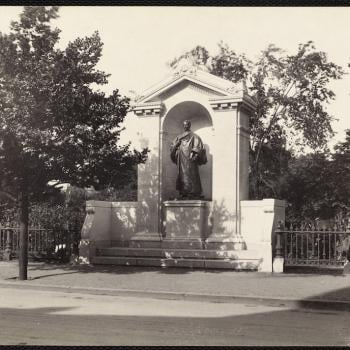I’ve thought long and hard about just what is and what is not a real spiritual practice.
I have friends who say their spiritual practice is taking naps, or, perhaps long walks, or maybe cooking. Frankly, when they talk like that I find myself twitching. They seem to mean anything that they do for themselves is a spiritual practice. Sign of the times. And, for me, frankly, these are minor signs of the apocalypse.
Last week I was on faculty for a Unitarian Universalist leadership school. Now, UUs as admirable as they, okay, we are for developing a sense of community and for engaging in the social questions of the day, are not particularly renowned for spiritual practices or disciplines. So, I was a little surprised when the term “spiritual practice” was raised and in ways that didn’t reduce spiritual practice to doing something for yourself.
My colleague Tandi Rogers described a way some of us have actually backed into a real spiritual practice. She drew our attention to the Black Lives Matter movement that has touched so many of our hearts. And she called what we often find ourselves pulled into is a spiritual practice. I was profoundly moved by her list of markers of a spiritual practice to be found there, including being willing to be awkward, practicing surrender, practicing following, practicing humility, noticing we are not saved by ourselves, and surrendering into hope. Me, I find this absolutely lovely. A real hint in the right direction.
And, while profound, still not quite there. That said, I’m going to return to Tandi’s observation in a moment.
Another colleague, Kathleen McTigue added another important point. I found it a good summary, as well. A spiritual practice involves intention, attention, and repetition. I really liked that. We need to intend, we need to set our mind and heart to something consciously. The heart of the practice is always attention. Whether to a single point, or to something broader. And, then we need to do it again. And again. And again. Now, of course, we could tumble from there into that self-care as spiritual practice with these guidelines. Although if we bring ourselves consciously to the project, its a bit harder. But, still, this misses one thing. So, along with intention, attention, and repetition, we need correction.
Which brings us up to the real matter of spiritual practice. Here we come to the door, the door to something.
Let me make a categorical assertion. Spiritual practices are not about making you feel better. They are about walking through a door from one place to another. We have a number of placeholders terms we like for that place. God is the big one. Heaven is another. In my circles the Pure Land is not unheard of. Though, maybe, we prefer words like the “real,” or “this very place, this very moment.” Sunyata. The farther shore. For the more abstract minded, the AbsoluteRelative. We are being invited to see that our ordinary ideas about who we are are rarely accurate in anything more than as a vague approximation. Spiritual practices take us into authenticity, into intimacy with what is.
And so it is very hard to have a spiritual practice, something that authentically does the job, that doesn’t also include correction, the guidance of someone, and I strongly recommend it be a living human being with whom you actually talk, it is past easy to fool oneself. Yes. Absolutely, life is the ultimate teacher. And, if you can’t find a living one, there are some very good teachers living in books. But, this is volunteering for a particularly rough version of the path. And, let’s be real, there are authentic spiritual teachers all around. (I don’t particularly recommend people with diplomas from schools of spiritual direction. Or, any flavor of perfect master, for that matter. Beyond that, they come in every flavor and design. Look with an open heart, and equally, a critical eye, and you’ll be okay.)
And, then, it is a life time project. It is finding direction in living, as well as, when the time comes, in dying. The whole thing. And, that important.
Okay. Let me summarise. I can bring this to three points for an authentic spiritual practice.
1) You need some shut up time. If you’re making noise all the time it is hard to pay attention, hard to notice the lessons and the lesson.
2) You need some regularity. Doing it once might open your heart and eyes. Has happened. But most of us need to return and return and return.
3) You need someone to check you. The brain is a great liar. We tell ourselves all sorts of stories about what we need and deserve, only some of which are true. Also along the spiritual way we have lots of experiences. Mostly of limited or actually no value on the way. Someone who has walked the way before you, who you have some trust in, and who is willing to say the hard truth now and again, is worth their weight in gold.
Now, back to Tandi Rogers. Here her words begin to become clarity itself. Now, we need that willingness to be awkward. Now we need that willingness to surrender. Now we need that sense of humility. Now we’re invited to see beyond ourselves. Now, we are invited into hope.
Do, this and your spiritual practice will not be about lowering your blood pressure, it will be about coming to the doors of heaven, calling to be let in.
Some of us will tap lightly. Others will bang with all our might.
That’s what spiritual practice is all about.
That’s the deal.













